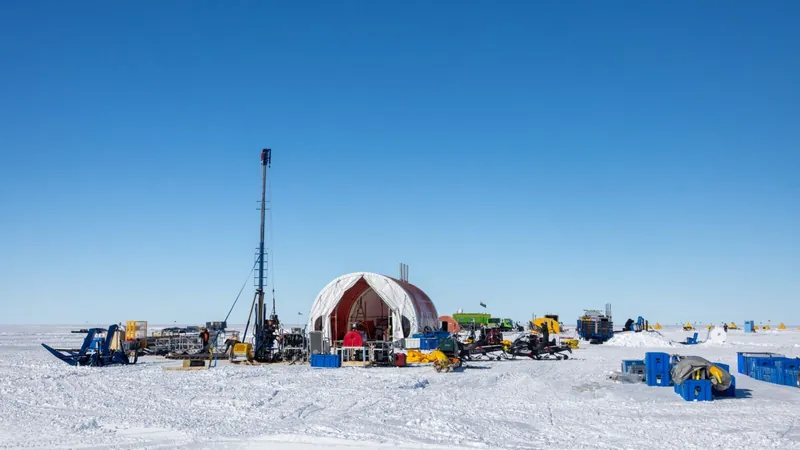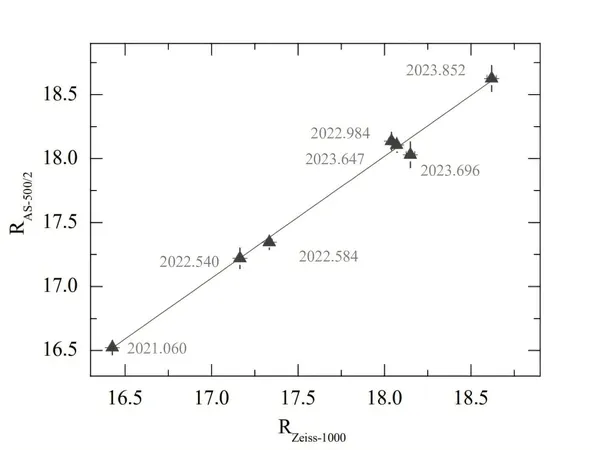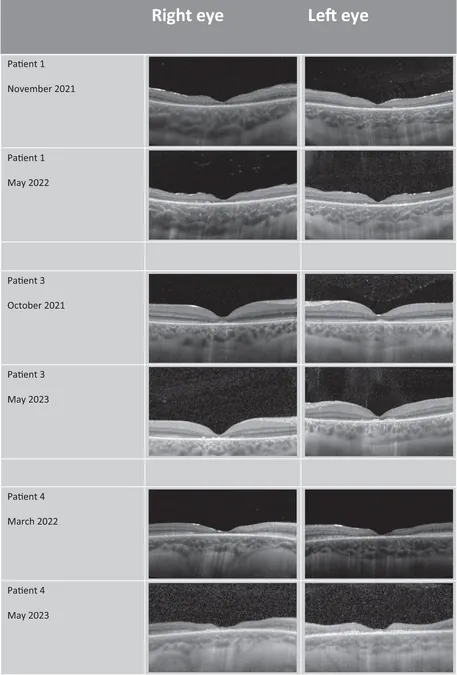
Revolutionary International Mission Sets Sail to Uncover Antarctic Climate Secrets!
2024-11-12
Author: Rajesh
International Climate Research Expedition
An international team of climate researchers, including scientists from New Zealand, is gearing up for a daring expedition aimed at extracting crucial geological records that could reshape our understanding of sea-level rise amidst climate change. The initial team has commenced an arduous journey, traversing 1,128 kilometers across the expansive Ross Ice Shelf to establish a research camp on the cusp of the West Antarctic Ice Sheet.
The Threat of the West Antarctic Ice Sheet
The West Antarctic Ice Sheet is a colossal formation with enough ice to potentially elevate global sea levels by up to 5 meters if it were to melt entirely. Disturbingly, evidence suggests that parts of this ice sheet, particularly around the notorious "Doomsday Glacier" (Thwaites Glacier), face an imminent threat of collapse, largely due to warm oceanic waters enveloping these regions.
Importance of the Ross Ice Shelf
In contrast, the Ross Ice Shelf remains insulated by colder waters below, acting as a crucial stabilizing element for the inland ice of the West Antarctic Ice Sheet. Yet, there's a significant gap in our knowledge regarding when this protective shield might fail and what temperatures could initiate an irreversible melt.
The SWAIS2C Project
This pressing challenge is the driving force behind the SWAIS2C (Sensitivity of the West Antarctic Ice Sheet to 2°C) project, an unprecedented collaboration involving scientists, drillers, and Antarctic field specialists from 13 countries. A dedicated team of 27 members will camp at the KIS3 drilling site throughout the Antarctic summer, armed with the goal of unearthing insights hidden within sediment layers on the seabed beneath the Ross Ice Shelf.
Ambitious Extraction Plans
The ambitious plan involves melting through approximately 580 meters of ice, navigating a 55-meter ocean cavity, and successfully extracting a sediment core up to 200 meters deep. This undertaking is no small feat; last year's efforts were thwarted by technical difficulties after reaching the seafloor.
Expert Insights
"Attempting to collect a core at such a deep and remote site was a monumental undertaking," explains Professor Richard Levy, SWAIS2C co-chief scientist from GNS Science and Te Herenga Waka—Victoria University of Wellington. "Our experiences last year provided invaluable lessons. We return this year with heightened determination—climate change is a rapidly escalating crisis."
Climate Crisis Escalation
Significantly, global temperatures have reached alarming highs since their last deployment. The past year witnessed an unprecedented spike, surpassing the critical 1.5°C threshold outlined in the Paris Agreement. Although this rise may vary temporarily, projections indicate that a permanent breach of this threshold could occur within the next five to ten years.
Analyzing Historical Climate Data
The sediment core aimed for is expected to yield records spanning hundreds of thousands, even millions of years, capturing pivotal climatic epochs such as the last interglacial period approximately 125,000 years ago—when temperatures were around 1.5°C warmer than pre-industrial times, a condition eerily reminiscent of today's climate due to human-induced changes.
Insights from the Past
Analyzing sedimentary records may unveil patterns of the West Antarctic Ice Sheet's behavior during historically warmer periods. Indicator fossils like marine algae might reveal past open ocean conditions, signifying significant ice sheet retreats.
Seizing the Opportunity for Global Cooperation
Dubbed "the discovery of our lifetime," the SWAIS2C project seeks to use these critical findings to inform strategies for adapting to the impending threat of sea-level rise, while simultaneously underscoring the necessity for global efforts to combat greenhouse gas emissions.
Future Implications of the Research
"Extracting a core from such a remote and extreme environment will enable us to better anticipate how the West Antarctic Ice Sheet may react to future warming scenarios, including the sequence in which different regions will likely melt. We're looking to the past to safeguard our future," emphasized Professor Tina van de Flierdt, SWAIS2C co-chief scientist from Imperial College London.
Logistical Challenges Ahead
This groundbreaking mission begins with a rigorous logistical operation spanning the polar landscape. A convoy of PistenBully polar vehicles, laden with essential gear and provisions, departed from Scott Base on November 1. The arduous journey across the Frosty Ross Ice Shelf is projected to take approximately 15 days, aided by radar technology to navigate the perilous crevasses that threaten their path.
First Steps towards Understanding Sea-Level Rise
After reaching the KIS3 site, the team will construct a runway on the ice to enable ski-equipped aircraft to ferry additional scientists and drillers to the isolated camp.
A National Priority for New Zealand
As Professor Jordy Hendrikx, acting chief executive of Antarctica New Zealand, puts it, quantifying Antarctica's role in sea-level rise is a strategic priority for New Zealand, an island nation facing the direct consequences of rising waters. He stated, "This project brings to light the significance of global cooperation in tackling the vital challenges of our planet's future. New Zealand is proud to play a pivotal role in this scientific endeavor, aiming to protect both our communities and the world at large from the ramifications of rising seas."
Exciting Future Ahead
Stay tuned as this audacious team embarks on a journey into the unknown—one that could hold the key to navigating the future of our planet!




 Brasil (PT)
Brasil (PT)
 Canada (EN)
Canada (EN)
 Chile (ES)
Chile (ES)
 España (ES)
España (ES)
 France (FR)
France (FR)
 Hong Kong (EN)
Hong Kong (EN)
 Italia (IT)
Italia (IT)
 日本 (JA)
日本 (JA)
 Magyarország (HU)
Magyarország (HU)
 Norge (NO)
Norge (NO)
 Polska (PL)
Polska (PL)
 Schweiz (DE)
Schweiz (DE)
 Singapore (EN)
Singapore (EN)
 Sverige (SV)
Sverige (SV)
 Suomi (FI)
Suomi (FI)
 Türkiye (TR)
Türkiye (TR)